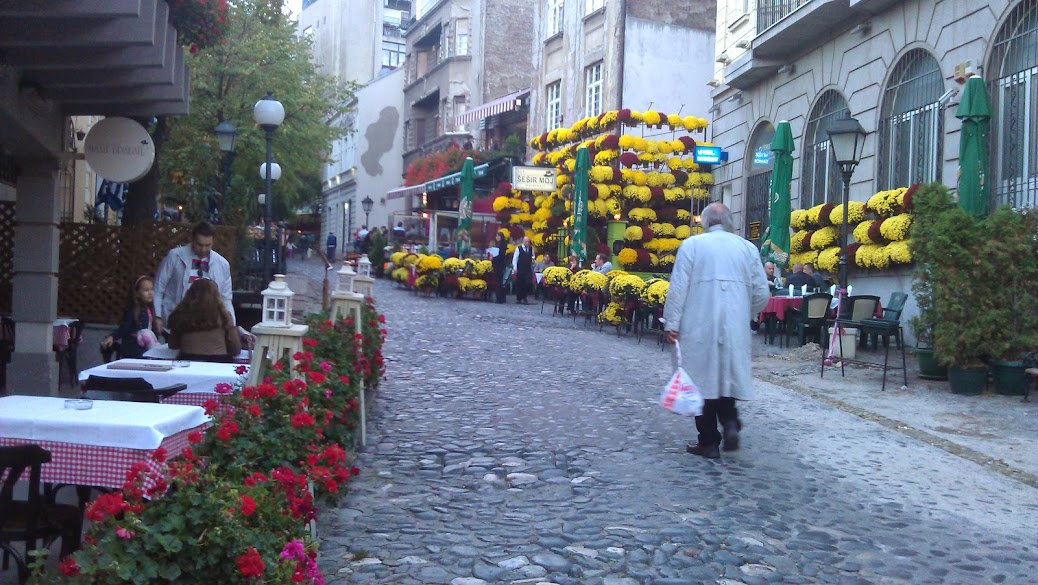 All right, everyone, we need to talk about the gluten-free bandwagon. “Oooh, I can’t have any bread. I’m gluten-free. I’ve cut out gluten for three weeks, and I feel so much better.” Scoff. I love gluten. Gluten is awesome. I eat it with every meal and finish off with gluten ice cream or a seitan pudding. If you’re gluten-free and you’re not actually diagnosed with gluten intolerance by a doctor, you’re kind of annoying. I still like you, but you’re kind of annoying.
All right, everyone, we need to talk about the gluten-free bandwagon. “Oooh, I can’t have any bread. I’m gluten-free. I’ve cut out gluten for three weeks, and I feel so much better.” Scoff. I love gluten. Gluten is awesome. I eat it with every meal and finish off with gluten ice cream or a seitan pudding. If you’re gluten-free and you’re not actually diagnosed with gluten intolerance by a doctor, you’re kind of annoying. I still like you, but you’re kind of annoying.
Of course, gluten-free people are high-strung, so this post may not make me many new friends. “How DARE you dismiss gluten sensitivity. I’ll have you know that I suffered from blah blah all my life and then I became gluten-free and within a week the rash disappeared. In fact, not only that but my long-lost dog came back blah blah. My uncle had one leg amputated, and after a year of giving up wheat products, his leg grew back and he was able to save a bus full of children from going over a cliff, blah blah.”
Only 1% of the population has the serious and possibly life-threatening Celiac disease, and yet approximately 90% of people I know are now gluten-free. We can’t escape them. They’re everywhere. We pro-gluten people have started forming guerilla resistance groups, hiding in the shadows, munching on our wheat breads and pastas.
Community engagement, lately, has become like this gluten-free bandwagon. Everyone is doing it, for everything, big and small, and the term itself has been thrown around with abandon. Seattle is known for trying to be inclusive, and you can’t turn the corner without someone trying to engage you in something. (“Psst, hey buddy, you wanna come to a summit…?”) And in Seattle, the engagement takes on special characteristics, being organic and artisanal, done in small batches.
It’s admirable that everyone wants to be inclusive and get community involvement and input for everything, but like the gluten-free craze, it’s gotten annoying. When the term “community engagement” is so liberally used, real community engagement gets lost in the mix. Getting eight people to come to a focus group, that’s not necessarily community engagement. Having simultaneous interpretation at a large gathering, that’s not necessarily community engagement. Having two or three people of color on your board or steering committee, that’s not necessarily community engagement.
For me, the engagement continuum has two ends: tokenizing and ownership.
At the tokenizing end are things like gathering community input without any intention to actually incorporate it into the final plan. This happens a lot, and it is irritating. I was once at an input session on education funding priorities (“Psst, hey buddy, wanna come to an input session on education funding priorities…?”). Dozens of community members showed up, brainstormed on easel papers, and voted on their top priorities using dots. They highlighted the need for more funding to go to helping immigrant and refugee parents so they can better support their kids academically, among other strategies. Everyone was excited. Sadly, the final plan was going to be approved the next day. There was no way any of the input would have shaped the plan. Dozens of people wasted their time, their hopes raised in vain. I looked at the plan and it listed the input session as evidence that the community had been engaged. This sort of tokenizing happens over and over again.
Good community engagement, like good leadership or good teaching, ends with the people who are being engaged feeling like this is their project, their movement, and that their efforts are leading to something substantive. This process is relationship-centered and is time-consuming, messy, nebulous, and resource-intensive. It requires organizers to commit to being in the boat for a long time, or to have someone who has been in the boat for a long time, because real community engagement requires trust and mutual respect, and you cannot build trust and mutual respect through a one-time stand-alone focus group or a kumbaya summit.
Community engagement lately has become the icing on the cake, the final, unessential, and sickeningly sweet component whose only purpose is to make the cake look pretty. Dude, authentic community engagement needs to be the cake! What does that mean? I’ve riffed on this subject before–(“Psst, hey buddy, you wanna complain about community engagement again?”)–but it bears repeating often.
First, engage people at the onset of any project, not at the end. Second, the people most impacted by whatever you’re trying to address should be leading or at least deeply at the core of the efforts, so if you’re not moving in this direction, something is fundamentally wrong. Third, fund people and organization equitably; stop just paying the organizers who will invariably go out to “engage” the community, which is basically just asking people to do stuff for free; we’re sick of it, especially when there is a whiff of tokenizing. Fourth, understand that community engagement takes time, so plan and budget for the long haul.
Also, maybe not everything needs community engagement. One time, I was asked to rally the communities of color around sewage overflow. Look, it’s really great that we have engineers and other professionals taking care of the sewage problem. Functioning sewers are an important part of any society, a part that we all take for granted. But the very busy community members I talked to did not really want to attend meetings and vote with dots on this issue. They just wanted the experts to do the studies and make the decisions, since they have little knowledge of this subject.
All right, I think I’ve offended enough people for one day, and the hordes of gluten-free people are probably filing their rice crackers into sharp points to stab me with. For some reason, I’ve been feeling irritable, and it shows in this post. I’ve also been sluggish and lethargic. It’s probably because I haven’t had a good night’s sleep in eight months. Or…maybe I should give up gluten for a while and see how I feel.
Related post: Community Engagement 101: Why Most Summits Suck


 Hi everyone. I am so exhausted. I don’t think I have thought this intensely for this long a period of time since, I don’t know, maybe the first season of Game of Thrones. I am now in Serbia in the city of Belgrade, some place that I never thought I would be. No one really says, “I want to go to Serbia for vacation” or “We’re going to Serbia for our honeymoon” or “Congratulations, you just won a free trip to Serbia!”
Hi everyone. I am so exhausted. I don’t think I have thought this intensely for this long a period of time since, I don’t know, maybe the first season of Game of Thrones. I am now in Serbia in the city of Belgrade, some place that I never thought I would be. No one really says, “I want to go to Serbia for vacation” or “We’re going to Serbia for our honeymoon” or “Congratulations, you just won a free trip to Serbia!” hree teenage girls were taking selfies on their phone. People were drinking and laughing in the numerous restaurants all around, munching on their grilled meat. A homeless man, carrying bags of cans, went around checking the trash bins while cars drove slowly, navigating the cobblestone streets circling the park. Above and surrounding us, buildings rose upward, some new, some old, many probably having seen the destruction of Belgrade during the countless wars. I ate my vegan sandwich and took a moment to be grateful for this trip, for having the chance to experience Belgrade during peace time. You know, more people should think about Serbia for their honeymoon.
hree teenage girls were taking selfies on their phone. People were drinking and laughing in the numerous restaurants all around, munching on their grilled meat. A homeless man, carrying bags of cans, went around checking the trash bins while cars drove slowly, navigating the cobblestone streets circling the park. Above and surrounding us, buildings rose upward, some new, some old, many probably having seen the destruction of Belgrade during the countless wars. I ate my vegan sandwich and took a moment to be grateful for this trip, for having the chance to experience Belgrade during peace time. You know, more people should think about Serbia for their honeymoon.
















